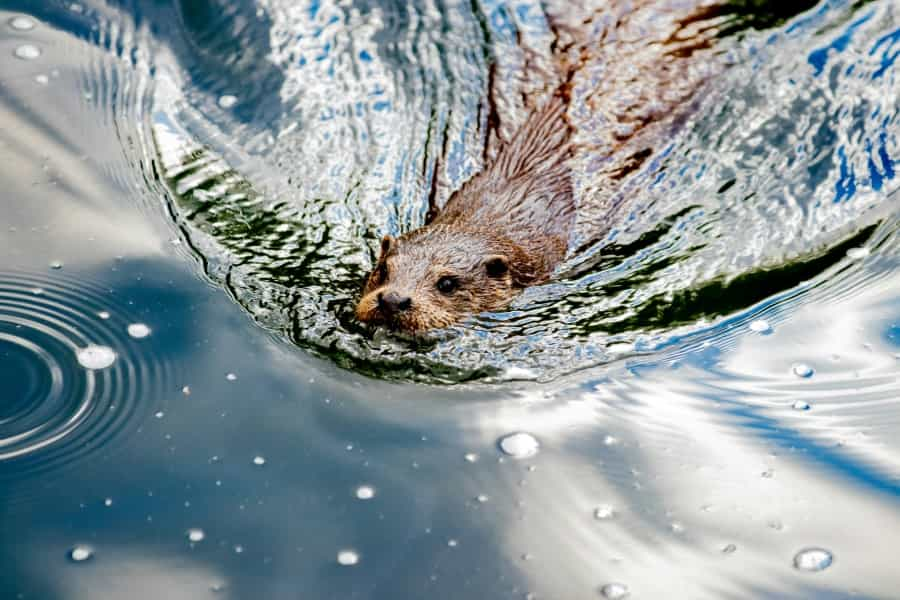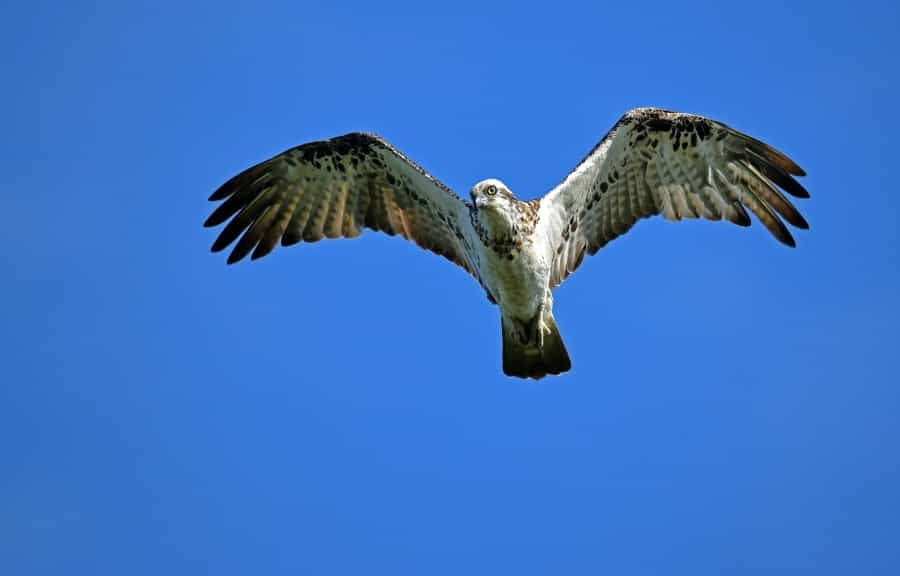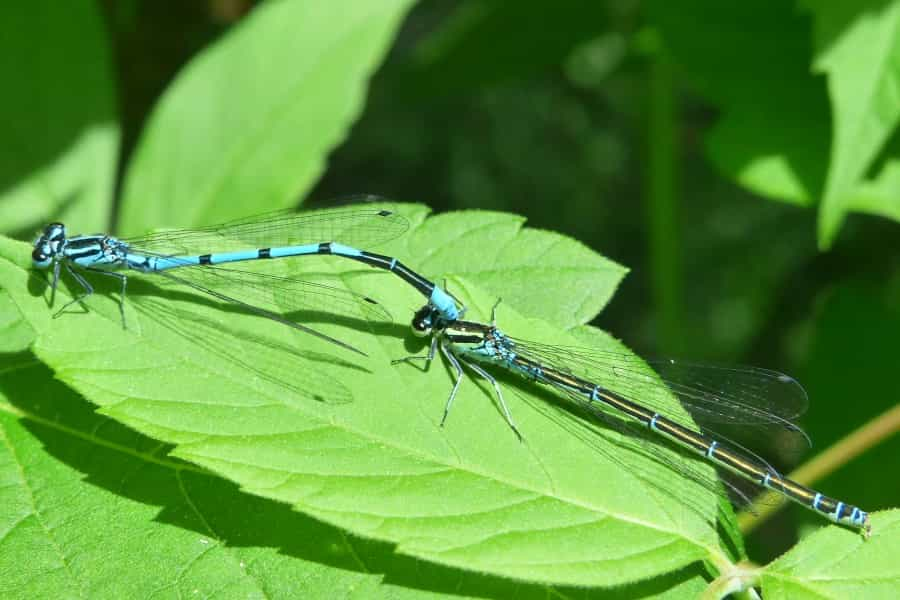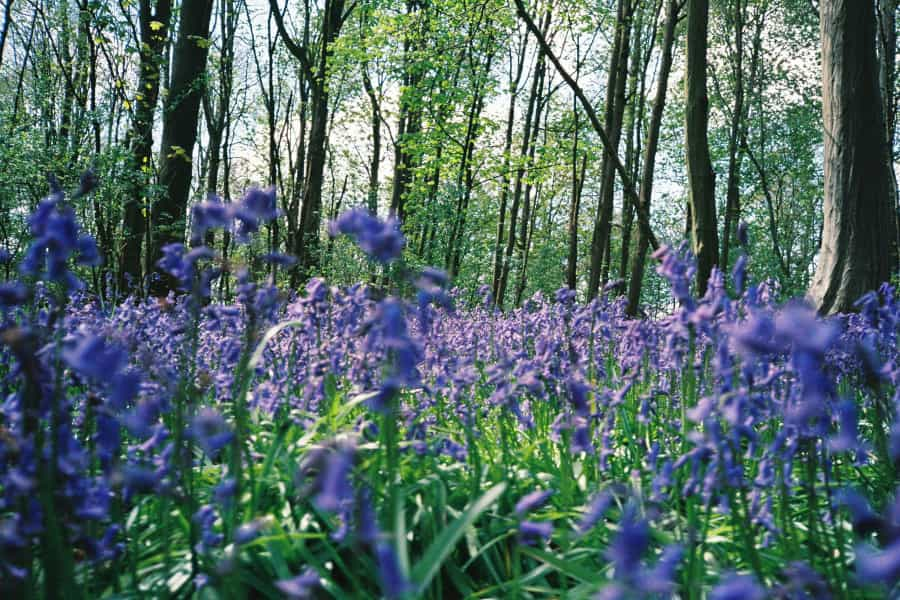Wildlife to see in Loch Lomond & The Trossachs

With mountains, lakes, rivers, moors, forests and even a stretch of coastline to its name, Loch Lomond and The Trossachs National Park is a wonderful place to see a wide variety of native wildlife. Whether you’re planning to dedicate days to wildlife photography or birdwatching, or just hoping to catch glimpses of native animals while following the national park’s hiking trails, this guide will give you a short introduction to what you might see and where.
Getting to know our native wildlife is an important part of preserving our environment, and it’s an activity for all ages. Bug hunts and nature trails (such as the Rabbit Hill Nature Trail) are among our favourite free family-friendly activities, while the wildlife hides scattered around the park are suitable for those with limited mobility.
Read on for an introduction to the wildlife of Loch Lomond and The Trossachs National Park, and some tips on the best locations to visit.
Mammals of Loch Lomond
The woodlands, moors and mountains of Loch Lomond and The Trossachs National Park are home to mammals large and small, with some great photography opportunities if you’re willing to be patient. Here are some of the mammals you might be able to spot.
Red deer
Often known as 'monarchs of the glen’ after Sir Edwin Landseer’s 19th-century portrait, red deer are Scotland’s largest land mammals, and there are many of them living in Loch Lomond and the Trossachs National Park, so you should have a good chance of a sighting. Red deer tend to stay in quieter areas, preferring lower levels in winter and moving to higher slopes in summer to avoid midges.
Deer move around many parts of the park, including moorland, woodland and mountain areas, but the best place to spot them is usually on a hillside or mountain slope, where they graze in good weather.
Best viewing spots: Glen Finglas, Glen Croe, Great Trossachs Forest
Red squirrel
Their cute fluffy ears and striking colour make red squirrels a real favourite of many wildlife enthusiasts – photographers in particular. They are, however, classed as an endangered species in the UK, due to habitat loss and diseases spread by the more populous grey squirrel. That means the conservation work that's being carried out in Loch Lomond and the Trossachs is vital to ensure the survival – and future growth – of the remaining population.
Red squirrels can often be spotted scurrying up and down trees on the hunt for food, so look out for flashes in the trees when you're walking in the woods, or settle in a woodland bird hide to see what you can spot. If you'd like to play your part in conservation efforts, report your red squirrel sightings – it all goes towards creating a useful squirrel sighting map.
Best viewing spots: Queen Elizabeth Forest Park, Benmore Botanic Garden
Otter

Otters have been found in many of the waterways within Loch Lomond and the Trossachs National Park, but these semi-aquatic mammals are famously secretive so you’ll be lucky to spot one. Look for evidence of otters, such as footprints in the mud, or places where they’ve slid down a muddy bank into the water. Dawn and dusk are usually the best times to see them, but if you're alert you may catch a glimpse of an otter swimming in a loch or river at any time of day.
Best viewing spots: Loch Lomond, River Teith
Did you know?
It was possible to see bears in Loch Lomond and the Trossachs National Park until the 1980s. These weren’t free-roaming bears, however – they lived at the Loch Lomond Bear Park, where visitors could drive among brown bears, Himalayan bears and grizzly bears. Set up in 1972 by Jimmy Chipperfield, from the famous circus family, it was a popular local attraction but the upkeep proved too much and the park’s owners eventually declared bankruptcy.
Birds of Loch Lomond
From resident birds to migratory species passing by, it’s always worth looking up to the skies to see what you can spot while you're visiting Loch Lomond and the Trossachs National Park. There are all sorts of bird species to be seen around the park, but here are a few of the highlights to look out for.
Osprey

These majestic raptors are a symbol of the power of a good conservation project. Ospreys were on the brink of extinction in the UK some years ago, but concerted efforts to preserve their breeding areas have now paid off, with populations now on the increase once again.
Numerous breeding pairs of osprey now arrive in the park each year, arriving around mid-March after their migration from Africa and staying until temperatures start to drop in September. They're most active in the early morning and evening, but it's possible to spot osprey fishing in loch waters at any time of day if they’re nesting nearby.
Best viewing spots: Lake of Menteith, Loch Lomond eastern shore
Golden eagle
Spotting a golden eagle in the wild is a wonderful experience – these magnificent birds have a wingspan of up to two metres, making them one of the biggest birds you can see in the UK. Scotland is the only place in the UK with a wild population of golden eagles, estimated to be made up of around 500 pairs.
Loch Lomond and the Trossachs National Park is one of the areas where they can be spotted, often soaring high in the sky in search of prey (these incredible hunters can spot a target from two miles away). With only a small number of birds living here, sightings can be tricky; calm, clear days will give you the best chance.
Best viewing spots: Ben More, Great Trossachs Forest
Waterfowl
With so many bodies of water in Loch Lomond and the Trossachs National Park, it's no surprise to find that there's a large and varied population of waterfowl here too. All over the park you're likely to see groups of resident birds like mallards, eider ducks and tufted ducks or migratory birds like whooper swans, white-fronted geese or pink-footed geese, depending on the season.
You can visit a dedicated birdwatching location to find larger populations of these birds, but you're likely to come across them at smaller lochs as well. Keep an eye out for other water-loving birds too, such as kingfishers, curlews and oystercatchers.
Best viewing spots: Loch Lomond, Loch Katrine
Did you know?
There are two RSPB Scotland locations in Loch Lomond and the Trossachs National Park – and they're quite different in style. The main centre, RSPB Loch Lomond, is a fully serviced centre with a family-friendly Nature Hub, wheelchair-accesible trails, guided walks and handy facilities including toilets, picnic areas and binocular hire. Its more remote cousin, RSPB Inversnaid, is a simpler place with just a car park and toilets – it’s a great spot to head for if you’d like a peaceful birdwatching experience.
Loch Lomond’s smaller wildlife
The ospreys and the red deer may be the headline acts, but they may require a lot of patience to seek out – and they’re far from the only interesting animals living around the national park. Amphibians, reptiles, insects and invertebrates are all important members of the ecosystem, and looking out for some of the smaller creatures can be great fun, especially if you’re with children. Below are some of the things to look out for while you’re out walking in Loch Lomond and the Trossachs National Park.
Common frogs and toads
Like all amphibians, frogs and toads rely on lakes and ponds for their breeding grounds, so the wetland environments of Loch Lomond and The Trossachs National Park are perfect for them. If you’re visiting in spring, look out for clumps of frogspawn or pearl-like toad eggs in the water – any body of water is fair game, from a mountain lake to a decent-sized puddle.
Fully grown frogs and toads can usually be spotted from around July through to the autumn – look for them getting out and about hunting for tasty snacks like slugs and flies. They’ll be at their biggest when early autumn comes round, when they’re starting to get ready for hibernation.
Best viewing spots: Flanders Moss National Nature Reserve, Gartmorn Dam Country Park
Dragonflies and Damselflies

Dragonflies and their smaller cousins, damselflies, are key pollinators for the park's plants – and these colourful, agile creatures are a joy to watch as they dart from plant to plant. They spend the early part of their life as larvae underwater and prefer to continue living in wetland areas where they have access to fresh water in ponds, lakes or rivers.
Red, emerald and blue damselflies can often be seen flitting around in Loch Lomond and The Trossachs National park, and their bright colours make them easy to spot. Larger and darker dragonflies are also often found around lochs and moorland pools. Be patient and you may just catch a snap of one at rest on a plant with their wings tucked along their body. Dragonflies and damselflies live for around four months in their flying stage, lasting from around May to September.
Best viewing spots: Loch Ard Forest, Loch Lomond
Butterflies
Butterflies are popular among wildlife seekers, photographers and children for their pretty patterns, but these colourful insects play a vital role in the environment too – primarily as pollinators. It's often said that butterflies are key indicators of the health of an ecosystem, and the good news is that Scotland's seems to be doing well, as it’s home to 35 different species.
There’s no room for complacency, however, as sightings of some of the rarer species have fallen in recent years, with some now listed as endangered. The woodlands and meadows of Loch Lomond and The Trossachs National Park are good places to spot a number of different varieties of butterfly, including Red Admirals, Peacocks and several kinds of fritillaries. Butterfly Conservation has a good online field guide with handy pictures and information on when and where to spot them.
Best viewing spots: RSPB Inversnaid, Balloch Castle Country Park, Aberfoyle
Did you know?
Loch Lomond and The Trossachs National Park is also home to a population of the UK’s only venomous snake, the adder. These snakes are actually quite shy and unlikely to lash out, but it’s worth giving them some space if you come across one. In fact their bite is not considered to be particularly dangerous for humans but they can be nasty for children and older people, so watch out for adders basking on warm pathways in summer.
Plant life
At the heart of the national park's ecosystem is of course its plant life – from the huge centuries-old trees where birds nest to the mosses and lichens that sustain many of the smaller animals. The varied ecosystems of Loch Lomond and The Trossachs National Park – including woodland, wetland, moorland meadow and mountain terrains – mean there’s a wide variety of plants to be seen around the park, with interest spread across the seasons. Here’s a short guide to just a few of the highlights.
Ancient woodlands

There have been pine forests across these hills for many centuries, although in fact many of the trees you'll see these days were planted by humans rather than reproducing naturally. The soaring Scots pines (which can grow up to around 75 metres tall) are iconic symbols of Scotland, but the ancient woodlands of Loch Lomond and the Trossachs National Park also include oak, birch, ash and other species.
Down at ground level, mosses and ferns thrive alongside clumps of native flowers. Spring is a lovely time to visit, with carpets of bluebells swaying in the breeze. A little later, they give way to ransoms (wild garlic), which fill the air with their distinctive scent.
Best viewing spots: Great Trossachs Forest, Queen Elizabeth Forest Park
Wildflowers
Away from the woodlands, different kinds of wildflowers thrive across the moors and mountains of Loch Lomond and The Trossachs National Park. Look out for delicate white dryads and purple or yellow saxifrage on the limestone terrain around Ben Lui, bilberry bushes on the moors and wild thyme on mountain ledges.
The national park is also a great place to see a couple of Scotland’s symbolic plants in the wild – there are lots of thistles spread across the meadows, and in summer the slopes of the hills and mountains are full of colour from great swathes of heather. For a flash of purple earlier in the year, look out for orchids blooming along verges and in grassy areas in April and May.
Best viewing spots: RSPB Loch Lomond, or meadows and open hillsides across the park
Did you know?
In years gone by, heather gathered on the moors was often used to make beer – a recipe dating back to Roman times. It’s still produced by one Scottish craft brewery, so look out for it in local shops and pubs.
Tips for wildlife watching
‘Wild’ is the key part of the word wildlife, so sightings of the animals listed here are never guaranteed – but there are some things you can do to increase your chances without interfering with the natural world. We’ve listed a few tips here, along with some things you can bring to help you make the most of your wildlife-spotting outing and be safe and comfortable while you’re there.
Best times to go wildlife spotting
Summer is likely to offer the best weather for outdoor activities, and there’s usually a fair amount of animals to be seen at this time too – for example, May to September is a good time to look out for ospreys fishing on Loch Lomond. However, animal behaviour is often at its most interesting in spring and autumn, making these potentially even better times to visit.
Spring sees the return of migratory birds to the park, and it's also nesting and breeding season. That means you might catch sight of things like the black grouse’s lekking displays as they attempt to find a mate, or see golden eagles with outstretched wings guarding nesting spots on the cliffsides. Meanwhile, autumn brings the spectacle of rutting red deer, with the evocative roars echoing around the hills. Most wildlife is at its most active in the early morning and around dusk, so these are usually the best times to keep your eyes peeled – especially in summer.
What you'll need for wildlife spotting
When you’re going out specifically to look for wildlife, it’s a good idea to pack the following items:
-
Binoculars for seeing details
-
A camera with a good zoom and tripod for photos
-
Field guides to help you identify species
-
Warm clothes and waterproofs for long periods of staying still
Respecting wildlife
Always remember that you're a guest in the animals' home here, so you should do your best to avoid disturbing them. This means:
-
Keeping a safe distance from animals, especially mothers and youngsters
-
Keeping dogs under control, or leaving them at home
-
Not wearing strong scents or bringing food that may attract them
-
Leaving no trace, taking all rubbish away and doing your best not to trample the terrain too much
-
Always following the Scottish Outdoor Access Code
Make the most of your Loch Lomond trip
It probably goes without saying that in order to see wildlife of any variety you’ll need to be outside – and that means you can really give yourselves the best possible chance of wildlife encounters by finding somewhere to stay in the outdoors. Pitchup has an excellent collection of places to stay in Loch Lomond and The Trossachs National Park, from simple meadow pitches to log cabins where you’ll be able to keep an eye on the Scottish wildlife in all weathers.
You might, for example, choose to stay at Cobleland Campsite, which has direct paths into Loch Ard Forest, or splash out on a luxury stay at Portnellan Lodges for easy access to Ben More. Whatever your travel style, take a look at our full list of Loch Lomond and The Trossachs camping and glamping options.